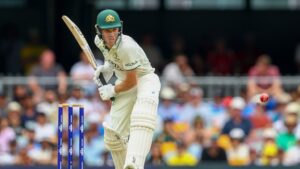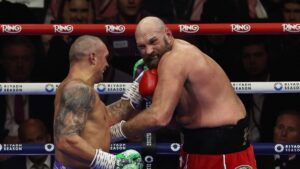Fed Officials See Need for Continued Interest-Rate Increases, but Less Certainty Over Destination

Federal Reserve officials agreed at their monetary-policy meeting last month they needed to keep raising interest rates enough to lower inflation, but signaled greater caution with the pace of coming increases.
The central bank has raised rates this year at its fastest pace since the 1980s. Minutes from the Fed’s July 26-27 policy meeting, released Wednesday, showed officials were sensitive to two opposing risks as they weighed how and when to slow those increases.
The first concern, which the minutes described as significant, is that they might need to raise rates more than currently anticipated if price pressures have spread more broadly through the economy. But officials, for the first time, acknowledged they might also raise borrowing costs more than needed—causing unwarranted economic weakness, because of the delay between when borrowing costs go up and when that is reflected in economic activity.
“Participants judged that, as the stance of monetary policy tightened further, it likely would become appropriate at some point to slow the pace of policy rate increases while assessing the effects of cumulative policy adjustments on economic activity and inflation,” the minutes said.
Stocks pared losses after the release of the minutes.The Dow Jones Industrial Average fell 0.5%, or 171.69 points Wednesday, closing at 33980.32. Yields on the 10-year Treasury note rose 0.072 percentage point to 2.894%.
Officials voted to raise their benchmark rate by 0.75 percentage point in July, following an increase of the same size in June. Those were the largest rate increases since 1994. Several officials have indicated since the July meeting that they would support lifting rates by at least a half percentage point at their next meeting in September.
Economic forecasts prepared by the central bank’s staff last month projected inflation to decline somewhat more than anticipated in its June projections as a result of a bigger slowdown in economic activity and hiring later this year.
The Fed’s rate increase last month lifted its benchmark federal-funds rate to a range between 2.25% and 2.5%, a level last seen in mid-2019. Markets rallied in the hours and days after the meeting because Fed Chairman
Jerome Powell
hinted at an eventual deceleration of rate increases at a press conference after the meeting.
Mr. Powell then described 0.75-percentage-point rate rises as “unusually large” and appeared to endorse projections made in June that showed rates rising by another percentage point through December, implying a slowdown in the pace of increases later this year. He also said the effect of rate hikes hadn’t been fully reflected through the economy, offering another reason to slow the pace of rate increases.
SHARE YOUR THOUGHTS
Is the Fed doing enough to control inflation? Why or why not? Join the conversation below.
The minutes showed that while officials discussed a potential slowdown in rate increases, some pushed back against the prospect of lowering rates in the short run. Some believed that once the fed-funds rate “had reached a sufficiently restrictive level, it likely would be appropriate to maintain that level for some time to ensure that inflation was firmly on a path back to 2%,” the minutes said, referring to the Fed’s inflation target.
Officials saw a “significant risk … that elevated inflation could become entrenched if the public began to question” the Fed’s resolve to raise rates high enough to slow down inflation, the minutes said.
The minutes show officials are looking to move away from raising rates in historically large intervals while being guided almost exclusively by inflation data, which is particularly backward looking, said Bob Miller, a senior portfolio manager at
“Staking out some conditionality going forward seems sensible to us given the unprecedented nature of this particular cycle,” he said.
The Fed is raising rates to combat inflation by slowing the economy through tighter financial conditions, which typically curb investment, hiring, and spending. Any easing in financial conditions, if sustained, could work against the central bank’s efforts.
A recent market rally risks undoing some of the Fed’s work this summer if it results in lower borrowing costs—for example, on 30-year mortgage rates or five-year corporate bonds. Interest rates on the average 30-year fixed mortgage fell to 5.45% last week, down from 5.82% four weeks earlier, the Mortgage Bankers Association reported Wednesday.
Mr. Powell last month indicated officials would be watching financial conditions closely to determine how much farther and faster to raise rates. “Broader financial conditions have tightened a good bit,” he said. “The way this works is we set our policy, and financial conditions react, and then financial conditions are what affects the economy. And we don’t control the second step.”
While the Fed said it would wait for evidence inflation is decelerating toward its 2% goal before halting rate increases, investors often try to anticipate such shifts before they occur. The Fed also doesn’t appear to have much confidence in its own ability to forecast inflation, which makes it difficult to know when to stop raising rates.
In the days since last month’s meeting, Fed officials have fanned out to pour cold water on investors’ hopes that the central bank would turn from raising rates to cutting them within a year or so.
“There’s a disconnect between me and the markets,” Minneapolis Fed President
Neel Kashkari
said last week. Any expectation of Fed rate cuts over the next six to nine months “is not realistic,” and he said it was more likely that the Fed would hold rates at a higher level until inflation is “well on its way back down to 2%.”
Investors and central bankers are watching monthly inflation readings carefully for signs that the Fed will have to raise rates more or less aggressively than anticipated.
Last week, the Labor Department’s reported that its consumer-price index was unchanged in July from June amid declines in prices of energy, airfares, and used cars. That has fueled hopes that subsequent inflation readings will reveal a broader slowdown in prices that would allow the Fed to stop raising rates after a few more increases.
At last month’s meeting, officials said they expected falling gasoline and energy prices to bring inflation down this year, but such declines “could not be relied on as providing a basis for sustained lower inflation, as these prices could quickly rebound,” the minutes said.
Through the summer, Fed officials have been unusually united over their goal, but if the labor market cools and the economy slows, Mr. Powell could face a trickier task in forging consensus.
Economists outside the Fed are increasingly split over how aggressively the central bank should continue lifting rates. One camp says even if inflation falls over the next 12 months, it is very likely to settle out at 4% or higher, a level that most Fed policy makers would deem unacceptably above their 2% target. Some of these economists fear the Fed isn’t being straightforward about how high interest rates will need to go.
A related worry is that the Fed, by suggesting it is closer to the end of its rate rises than the beginning, will repeat the so-called “stop-go” policies of the 1970s, when the central bank oscillated between raising rates to take on inflation and then backing off to shore growth. It succeeded at neither.
Another camp warns that the Fed—embarrassed in retrospect at waiting too long to pullback its support of an economy that didn’t need it in 2021—is now compounding that error by tightening too much. These economists believe that rather than reflect an overheated labor market, the current surge in inflation stems from global developments that are harder to address through interest-rate policy.
Write to Nick Timiraos at nick.timiraos@wsj.com
Copyright ©2022 Dow Jones & Company, Inc. All Rights Reserved. 87990cbe856818d5eddac44c7b1cdeb8









